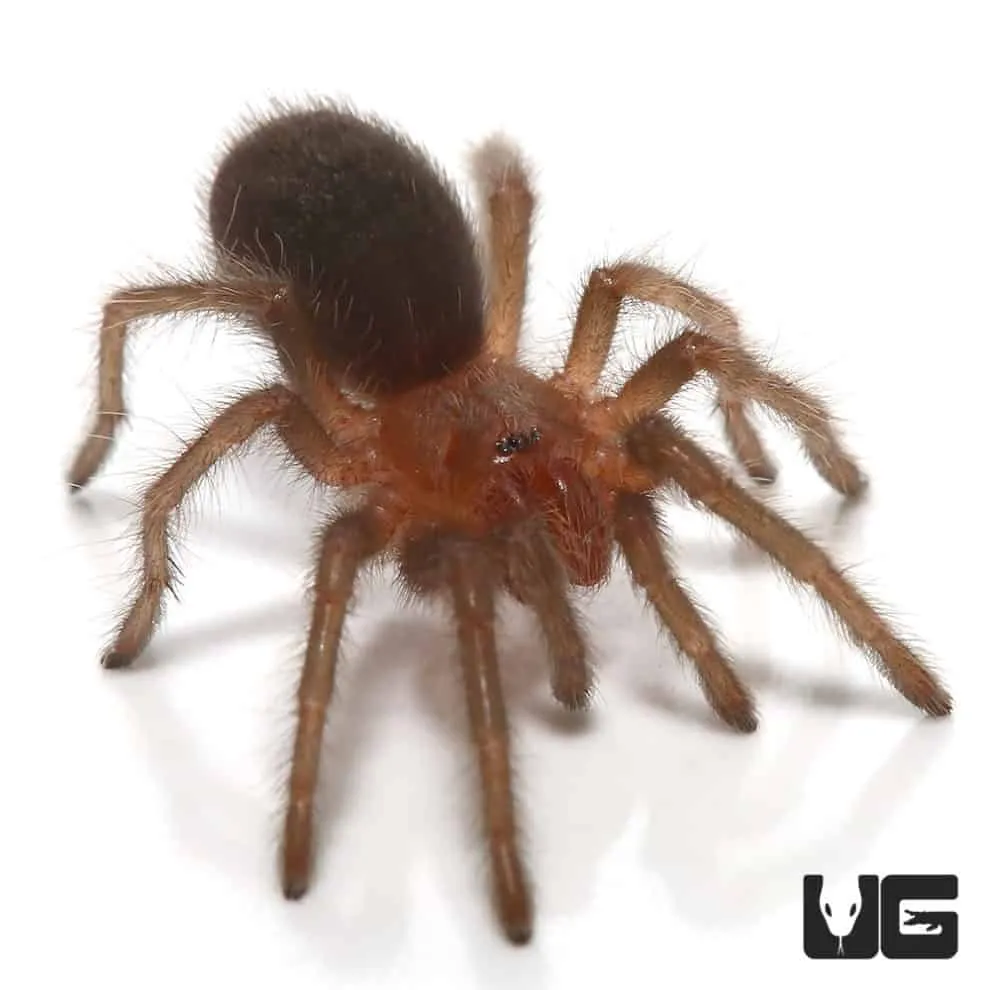What is a Brazilian Black Tarantula (Grammostola pulchra)?
The Brazilian Black Tarantula, scientifically known as Grammostola pulchra, is a captivating and sought-after species among tarantula enthusiasts. Native to the grasslands and scrublands of Southern Brazil, these spiders are known for their striking appearance and relatively docile nature, making them a popular choice for both novice and experienced keepers. Their allure lies in their jet-black coloration, making them a stunning addition to any collection. As you consider buying a Brazilian Black Tarantula, understanding its characteristics, care requirements, and where to find one is essential for responsible pet ownership. This guide delves into the fascinating world of these arachnids, providing everything you need to know before bringing one home.
Appearance and Characteristics
The most defining characteristic of the Brazilian Black Tarantula is, of course, its solid, velvety black coloration. This dark hue extends across its entire body, including the carapace (the upper shell), legs, and abdomen, creating a sleek and elegant appearance. Their bodies are covered in fine hairs, which add to their velvety texture. These tarantulas possess robust bodies and thick legs, well-suited for their terrestrial lifestyle. The overall appearance is one of power and grace, which adds to the aesthetic appeal. Their size and appearance can vary slightly depending on their age and overall health, but they generally maintain a consistent and recognizable form. The striking black color makes them stand out in any enclosure, captivating anyone who views them.
Size and Lifespan
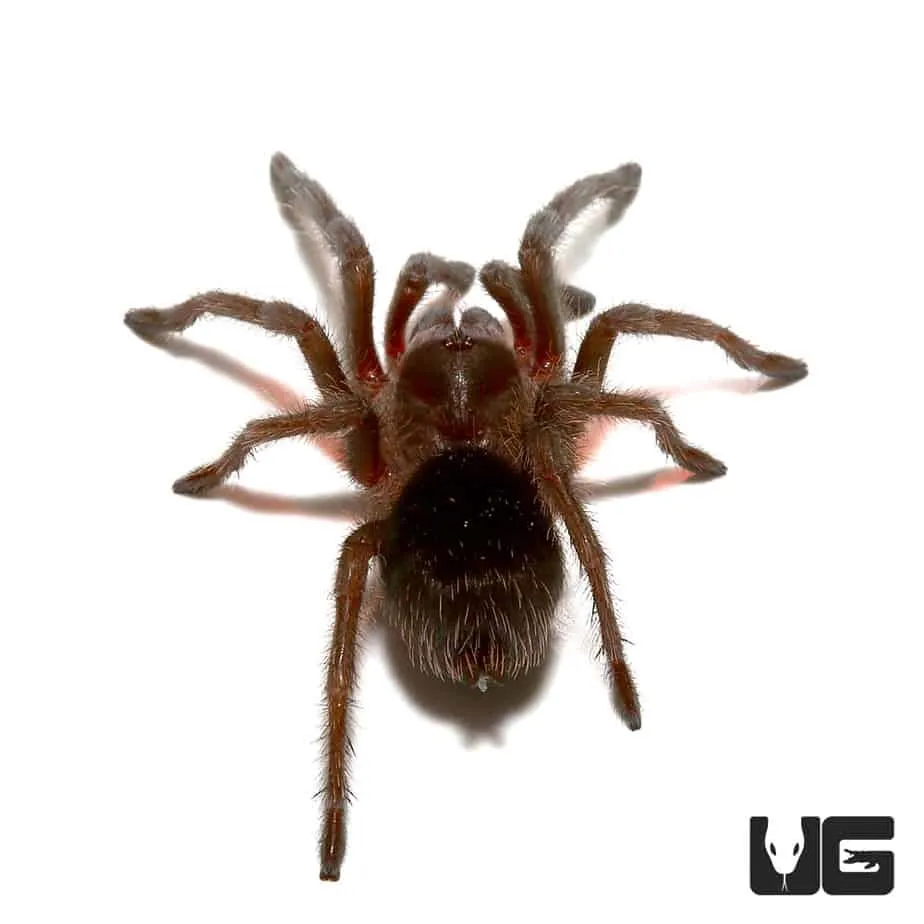
Brazilian Black Tarantulas are medium to large-sized tarantulas. Females typically grow to a leg span of about 6 to 7 inches, while males are often slightly smaller. Their growth rate is relatively slow compared to some other tarantula species, making them a long-term commitment for any owner. This slow growth also contributes to their longevity. These tarantulas can live for a significant amount of time. Females are known to live for 15 to 20 years or even longer with proper care. Males, on the other hand, have a shorter lifespan, usually living for 5 to 7 years after reaching maturity. This significant difference in lifespan highlights the importance of considering the gender when acquiring a Brazilian Black Tarantula, especially if you are looking for a long-term pet.
Origin and Habitat
Native to the grasslands and scrublands of Southern Brazil, these tarantulas have adapted to a specific environment that influences their behavior and care needs in captivity. In their natural habitat, they typically burrow and hide under rocks, in crevices, or within the root systems of plants, providing shelter from predators and the elements. The climate in their native region is characterized by moderate temperatures and humidity levels, conditions which are crucial for maintaining their health. When creating an enclosure for a Brazilian Black Tarantula, it is essential to replicate these natural conditions as closely as possible. This includes providing a suitable substrate for burrowing, maintaining the correct temperature and humidity, and offering hiding places. Understanding the origin and natural habitat of these tarantulas enables you to provide them with the best possible living conditions.
7 Amazing Facts About Brazilian Black Tarantulas
Fact 1 Docile Temperament
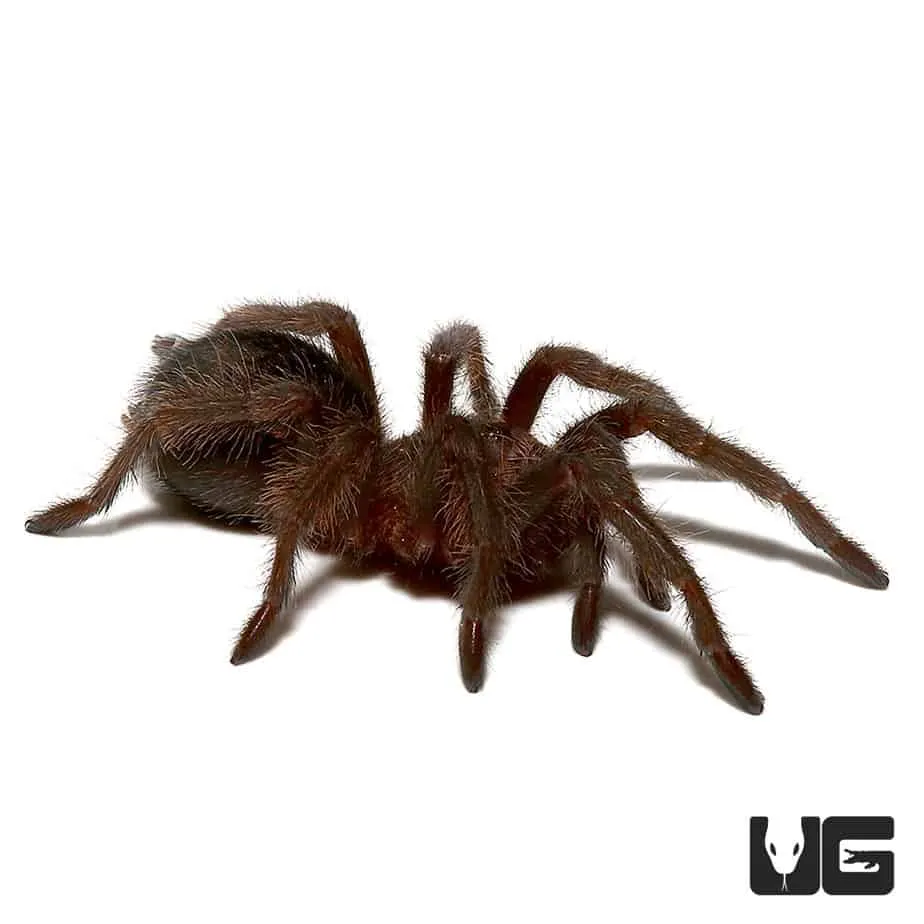
Brazilian Black Tarantulas are known for their generally docile temperament, making them a great choice for beginners. While all tarantulas possess venom, the Brazilian Black is not considered particularly aggressive. They are less likely to bite compared to some other species, preferring to flee or flick urticating hairs (tiny irritating hairs) as a defense mechanism. This calm demeanor contributes to their popularity as pets, as they are relatively easy to handle and observe. However, it is important to remember that individual tarantulas can have varying personalities. Always approach them with respect and caution to ensure a safe experience for both you and the tarantula.
Fact 2 Stunning Black Coloration
As mentioned earlier, the solid, velvety black coloration of the Brazilian Black Tarantula is one of its most striking features. This uniformity of color across the entire body, from the carapace to the legs and abdomen, gives them a sleek and elegant appearance. This stark, monochromatic look is a favorite among tarantula enthusiasts and adds a touch of sophistication to any collection. The rich black color contrasts beautifully with the substrate and decor in their enclosure, making them visually appealing. This unique coloration is a key reason why so many people are drawn to the species, and it is a constant source of visual enjoyment.
Fact 3 Relatively Slow Growth
Compared to some other tarantula species, the Brazilian Black Tarantula has a relatively slow growth rate. This means they mature at a slower pace, providing owners with a longer opportunity to enjoy the spider’s various life stages. This slower growth also contributes to their impressive longevity, with females often living for 15-20 years or longer. This slower pace makes them less demanding in terms of housing adjustments, as they won’t outgrow their enclosure quickly. It also means you can enjoy their presence for many years. This extended period also gives you ample opportunity to observe their behaviors and enjoy their unique characteristics as they grow.
Fact 4 Ideal for Beginners
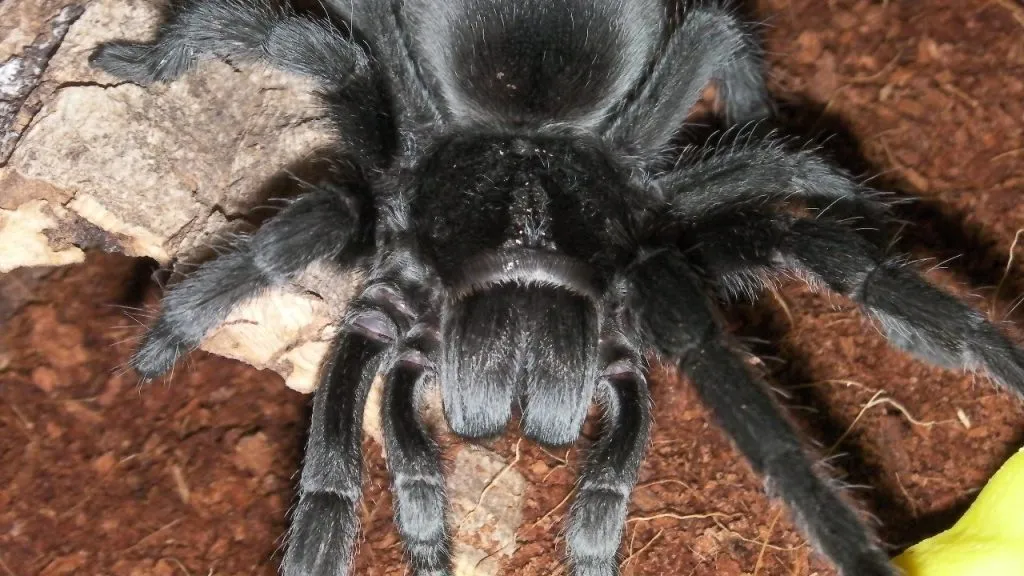
Due to their docile temperament, low maintenance needs, and overall hardiness, Brazilian Black Tarantulas are often recommended for beginner tarantula keepers. Their calm nature makes them less intimidating to handle and observe. They do not require complex setups, demanding only the basics in terms of housing, substrate, and diet. They are also relatively tolerant of minor fluctuations in their environment, making them a forgiving species for those new to tarantula keeping. This makes them a great choice if you are just getting started. However, it is essential to research their specific care requirements before bringing one home. This will ensure that you provide the best possible environment for your new pet.
Fact 5 Low Maintenance
Beyond their beginner-friendly temperament, Brazilian Black Tarantulas have relatively low maintenance requirements, adding to their appeal. They do not need frequent feeding; juveniles can be fed once or twice a week, while adults may need feeding only once every week or two. Their housing requirements are also straightforward, consisting of a suitable-sized enclosure, a substrate for burrowing, and a water dish. They do not require extensive heating or lighting systems, making their care less demanding. This makes them a good fit for people with busy schedules. However, regular monitoring of their environment and behavior is still necessary to ensure their health and well-being.
Fact 6 Long Lifespan
One of the most appealing aspects of owning a Brazilian Black Tarantula is its long lifespan, especially for females. These tarantulas can live for 15 to 20 years, or even longer with proper care. This longevity provides an extended period of companionship and enjoyment for their owners. It also adds to the investment of time and resources, but the reward is a long-term relationship with a fascinating creature. This long lifespan makes them a rewarding pet for those seeking a low-maintenance, long-term commitment, providing years of enjoyment and observation. Careful planning and commitment are crucial when considering a pet with such a long life expectancy.
Fact 7 Popular Pet Choice
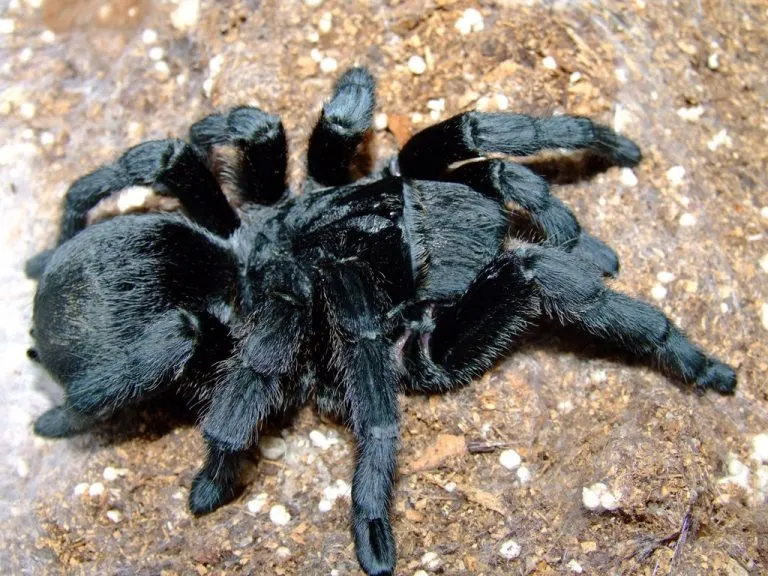
Due to the combination of factors discussed, the Brazilian Black Tarantula is a popular pet choice among tarantula enthusiasts. Their striking appearance, docile temperament, beginner-friendliness, and low maintenance requirements make them highly desirable. They are readily available for sale. Also, information and care resources are abundant. This popularity means that there is a wide range of information available, which makes it easier for owners to care for their pets. The availability of supplies and the wealth of knowledge makes them a great choice for beginners. This species continues to be a favorite in the exotic pet world, adding beauty and intrigue to any collection.
Where to Buy a Brazilian Black Tarantula
Finding a Brazilian Black Tarantula for sale involves researching and choosing the most suitable option. Several sources offer these spiders, including reputable breeders, online retailers, and occasionally, local pet stores. Each option has advantages and disadvantages, so it is important to choose carefully and prioritize the health and well-being of the tarantula.
Reputable Breeders
Purchasing directly from a reputable breeder is generally the best option, as it often ensures you receive a healthy specimen. Breeders specialize in tarantulas and have expertise in their care. They can provide valuable information about the spider’s lineage, age, and health. When choosing a breeder, look for those who are knowledgeable, passionate, and willing to answer your questions. A good breeder will prioritize the well-being of their animals, offering healthy, well-cared-for tarantulas. Asking for references or reviews from previous customers can help confirm their reputation. Breeders can also provide support and guidance. It is crucial to buy a tarantula that is a good fit for your lifestyle and experience level.
Online Retailers
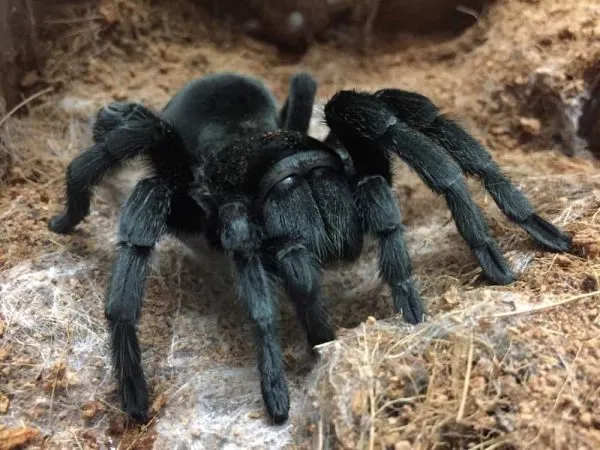
Online retailers offer a convenient way to buy a Brazilian Black Tarantula. Many online stores specialize in exotic pets and have a wide selection. These retailers often have a detailed information about the spiders, along with care guides. When considering online retailers, read reviews and check their reputation. Make sure the retailer has good shipping practices and guarantees the health of the tarantula upon arrival. Verify their return policies and their level of customer service. Check that the retailers use appropriate packaging and temperature control methods to ensure the tarantula’s safety during transit. It is recommended to buy from well-established retailers to avoid any potential problems.
Local Pet Stores
Local pet stores sometimes carry Brazilian Black Tarantulas for sale, though this is less common than finding them online or through breeders. Buying from a local pet store can offer the advantage of seeing the tarantula in person. You can assess its health and behavior before purchasing. Ensure the pet store staff have sufficient knowledge about tarantula care. Check the conditions of the enclosure and inquire about the tarantula’s feeding habits and overall health. It is essential to check the store’s reputation and return policies before making a purchase. Compare the prices and selection available at different local stores. Make sure the tarantula appears healthy, active, and well-cared-for before committing to the purchase.
Caring for Your Brazilian Black Tarantula
Providing proper care is crucial for the health, well-being, and longevity of your Brazilian Black Tarantula. This involves meeting its housing, feeding, and environmental needs. By replicating its natural habitat and providing the necessary care, you can ensure that your tarantula thrives in captivity. The following care guidelines are designed to help you create a safe and enriching environment for your pet. With the right care and attention, your Brazilian Black Tarantula can flourish and provide years of enjoyment. This includes ensuring the correct setup, food, and safety.
Housing Requirements
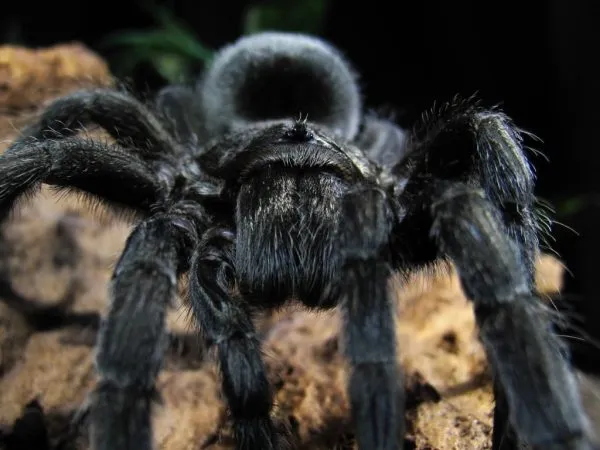
The appropriate enclosure is essential for your Brazilian Black Tarantula’s health and well-being. The size of the enclosure should be based on the tarantula’s size. A good rule of thumb is to provide a space that is at least twice the tarantula’s leg span in length and width. A 10-gallon tank is suitable for juveniles, while a 20-gallon long tank is recommended for adults. Make sure the enclosure is secure. The enclosure must have a tight-fitting lid to prevent escape, as tarantulas are skilled climbers. Ventilation is another key factor. The enclosure needs proper ventilation to prevent the buildup of mold and maintain the correct humidity level. The enclosure must be made of glass or acrylic. This makes it easier to observe your tarantula. Make sure the enclosure is placed in a stable location. This location should be away from direct sunlight and drafts.
Substrate and Decor
The substrate is the material that covers the bottom of the enclosure and plays a vital role in maintaining humidity and providing a natural environment for your tarantula. A suitable substrate for a Brazilian Black Tarantula is a mix of soil, peat moss, and vermiculite. This combination helps retain humidity, allows the tarantula to burrow, and provides a naturalistic appearance. The substrate should be deep enough to allow the tarantula to burrow. For juveniles, 2 to 3 inches is sufficient, while adults may need 4 to 6 inches. Add some decor to the enclosure. Add a hide, such as a piece of cork bark, a hollow log, or a commercial hide, to provide a secure place for your tarantula to retreat. You can also include live or artificial plants for decoration. Avoid using sharp or abrasive materials, as these can harm the tarantula. Replace the substrate as needed. The substrate needs to be replaced every 6 to 12 months to prevent the buildup of waste and maintain a healthy environment.
Temperature and Humidity
Maintaining the correct temperature and humidity levels is vital for your Brazilian Black Tarantula’s health. The ideal temperature range is between 75°F and 85°F (24°C and 29°C). Use a heat source, such as a heat mat placed on the side of the enclosure, to maintain the proper temperature. Avoid placing the heat source directly under the enclosure, as this can cause the substrate to dry out too quickly. Monitor the temperature regularly with a thermometer. The ideal humidity level for a Brazilian Black Tarantula is between 65% and 75%. You can monitor humidity using a hygrometer. Maintain humidity by misting the enclosure with water. You can lightly mist the enclosure with dechlorinated water every few days or as needed to keep the humidity levels within the recommended range. Ensure proper ventilation to prevent mold and maintain the proper humidity. Good ventilation helps to prevent the buildup of excessive moisture.
Feeding Your Tarantula
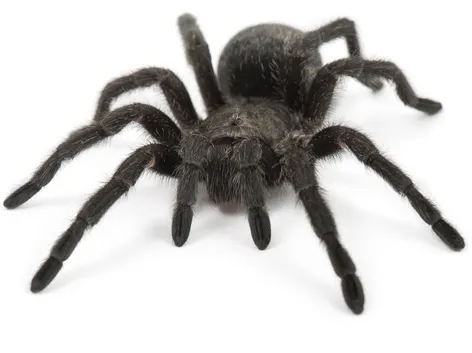
Feeding your Brazilian Black Tarantula is a relatively straightforward process. The frequency of feeding depends on the tarantula’s age and size. Juveniles should be fed 2-3 times per week. Adults can be fed once or twice a week. Offer a variety of insects, such as crickets, mealworms, dubia roaches, and earthworms. Make sure the insects are gut-loaded before offering them to your tarantula. You can do this by feeding the insects nutritious food, which will pass onto your tarantula. Remove any uneaten food within 24 hours to prevent mold and mites. Always provide a shallow water dish with fresh, clean water. The water dish should be shallow enough to prevent drowning. Monitor your tarantula’s condition and adjust the feeding schedule as needed. Overfeeding can lead to obesity and health problems.
Handling and Safety
While Brazilian Black Tarantulas are generally docile, handling them should be done with caution and respect. Avoid handling your tarantula unnecessarily. Frequent handling can stress the tarantula. Always approach the tarantula slowly and gently. Use a soft brush or cup to encourage it to move. Never try to grab or restrain the tarantula. Handle the tarantula over a soft surface, such as a bed or a carpet, in case it falls. Be aware of the tarantula’s behavior and body language. If the tarantula raises its front legs, flicks its hairs, or shows any signs of stress, it is best to leave it alone. Wash your hands thoroughly after handling the tarantula. While their venom is not usually dangerous to humans, it can cause minor irritation. Teach children how to approach the tarantula. Instruct them not to poke or bother it. Supervise children when they are near the tarantula to ensure their safety.
Health and Common Issues
Like all pets, Brazilian Black Tarantulas can experience health issues. Understanding these issues and how to address them will help you to provide the best possible care for your pet. Regular monitoring of your tarantula’s health and behavior is essential for detecting any problems early. This includes looking for any changes in appearance, appetite, or activity level.
Moulting
Moulting is a natural process in which tarantulas shed their exoskeleton to grow. It is a crucial part of the tarantula’s life cycle. Before moulting, the tarantula will typically stop eating and become less active. They may also appear dull in color and build a web mat on the substrate. The moulting process can take anywhere from a few hours to a few days. Do not disturb your tarantula during moulting. Do not feed it during this time, as it cannot eat. After moulting, the tarantula will be very vulnerable. It will take a few days for its new exoskeleton to harden. Increase humidity during moulting to help the process. The new exoskeleton is very soft. Do not handle the tarantula until its exoskeleton has fully hardened. Monitor for any problems and be ready to address them.
Parasites and Diseases
While Brazilian Black Tarantulas are generally hardy, they can be susceptible to parasites and diseases. Common issues include mites, fungal infections, and bacterial infections. Mites are tiny parasites that can infest your tarantula and its enclosure. They can cause irritation and stress. Fungal infections can occur in environments with poor ventilation. Bacterial infections can occur due to poor hygiene or injuries. Quarantine new tarantulas before introducing them to your collection. This will prevent the spread of any diseases or parasites. Clean and disinfect the enclosure regularly to maintain a clean and healthy environment. Remove any uneaten food and waste promptly. If you notice any signs of illness, such as loss of appetite, lethargy, or unusual behavior, consult a veterinarian or an experienced tarantula keeper. Preventative care is key. This includes proper husbandry practices and a clean environment.
Conclusion
The Brazilian Black Tarantula is a beautiful and fascinating creature. Their striking appearance, docile temperament, and relatively low maintenance needs make them popular. Understanding their specific requirements is essential. It includes providing the right housing, maintaining the correct environmental conditions, and offering a suitable diet. Always prioritize the tarantula’s well-being. By providing excellent care, you can ensure that your Brazilian Black Tarantula lives a long, healthy, and fulfilling life. This includes providing appropriate care and doing plenty of research. This also includes finding a reputable breeder. By following these guidelines, you can create a rewarding experience and enjoy the unique beauty of these captivating arachnids.
